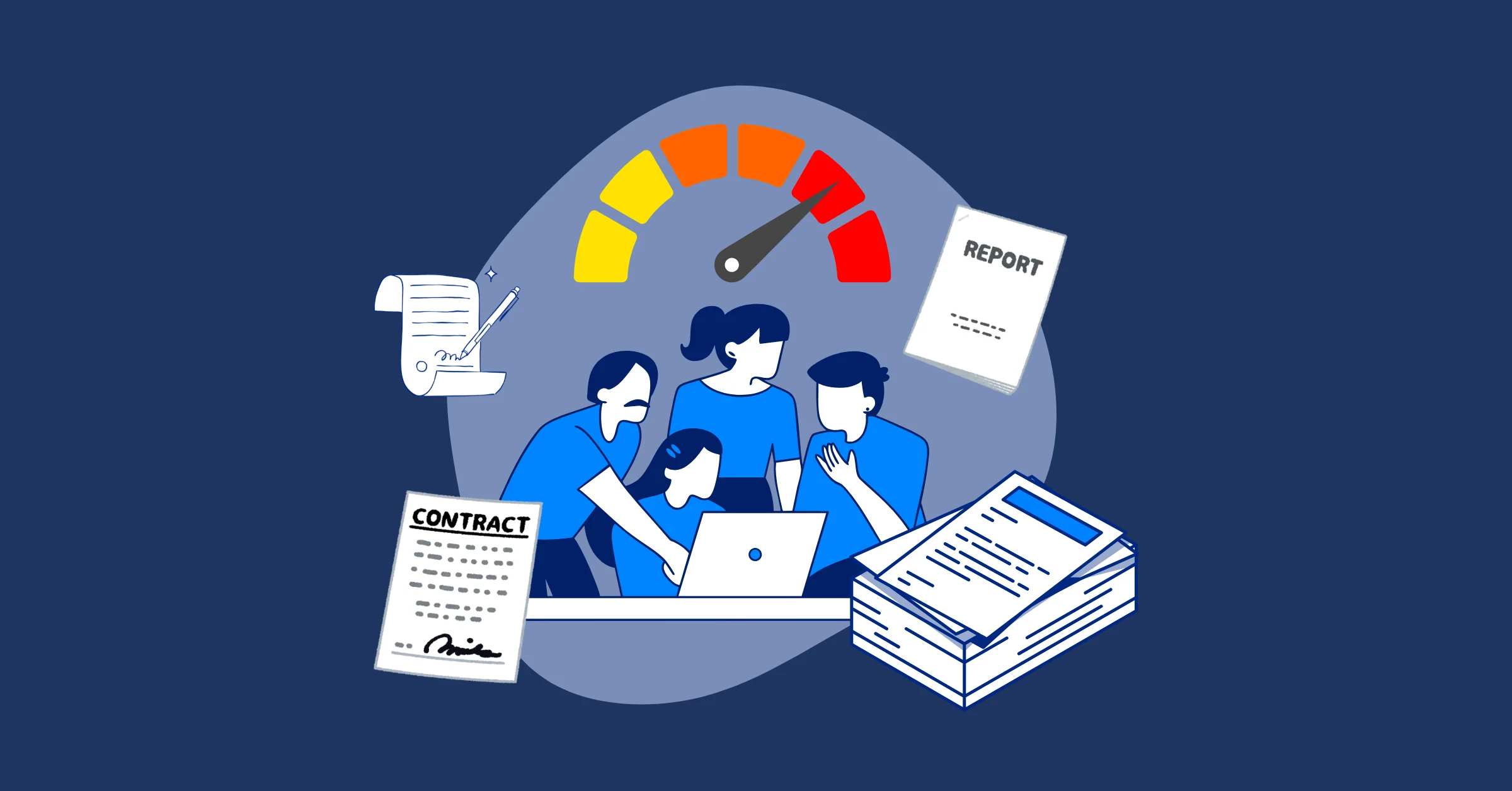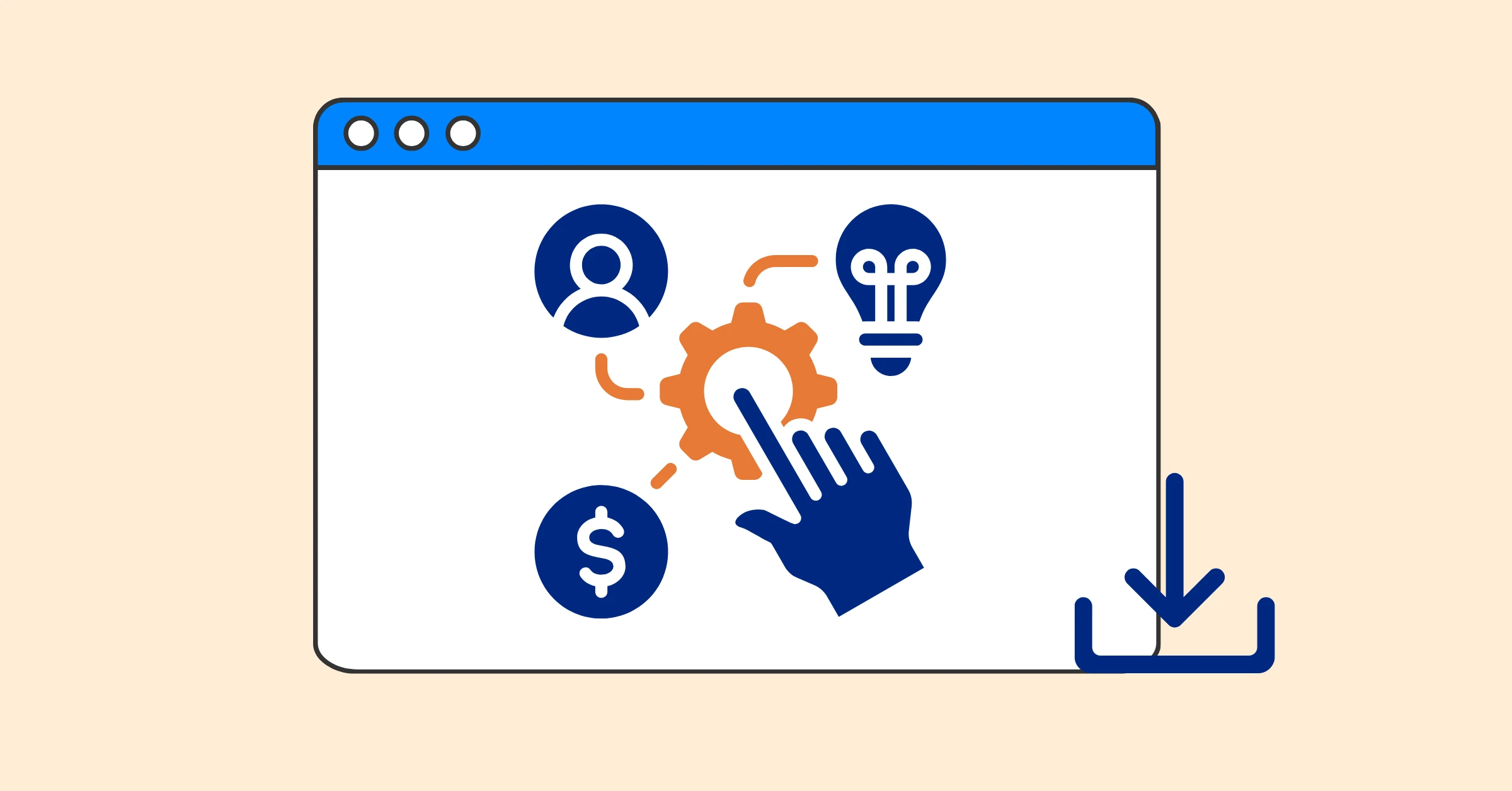How to Prevent Resource Constraints with Proactive Planning
Explore the effective ways to prevent resource constraints through proactive planning. Improve allocation, forecasting, and overall resource management.
Every project relies on resources like people, time, money, and materials working in harmony. When any of these fall short, progress slows, quality drops, and frustration rises. These challenges are known as resource constraints, and they’re among the most common causes of project delays and cost overruns.
Preventing resource constraints doesn’t mean having endless capacity. It means planning intelligently, anticipating limitations, and making informed adjustments before they affect outcomes. This article explores the different types of resource constraints, why they occur, and how proactive planning can help you manage resources more efficiently.
Understanding Resource Constraints
A resource constraint occurs when a project’s demand for a particular resource exceeds its availability. For instance, a marketing campaign might require five designers, but only three are available. Or a construction project may need specialized equipment that’s currently in use elsewhere.
When such shortages appear, projects experience:
- Missed deadlines and rework
- Uneven workloads and employee burnout
- Quality compromises
- Inflated costs and delayed delivery
Recognizing these issues as constraints is important because it allows project managers to design specific resource allocation strategies to address them instead of reacting in crisis mode.
Types of Resource Constraints
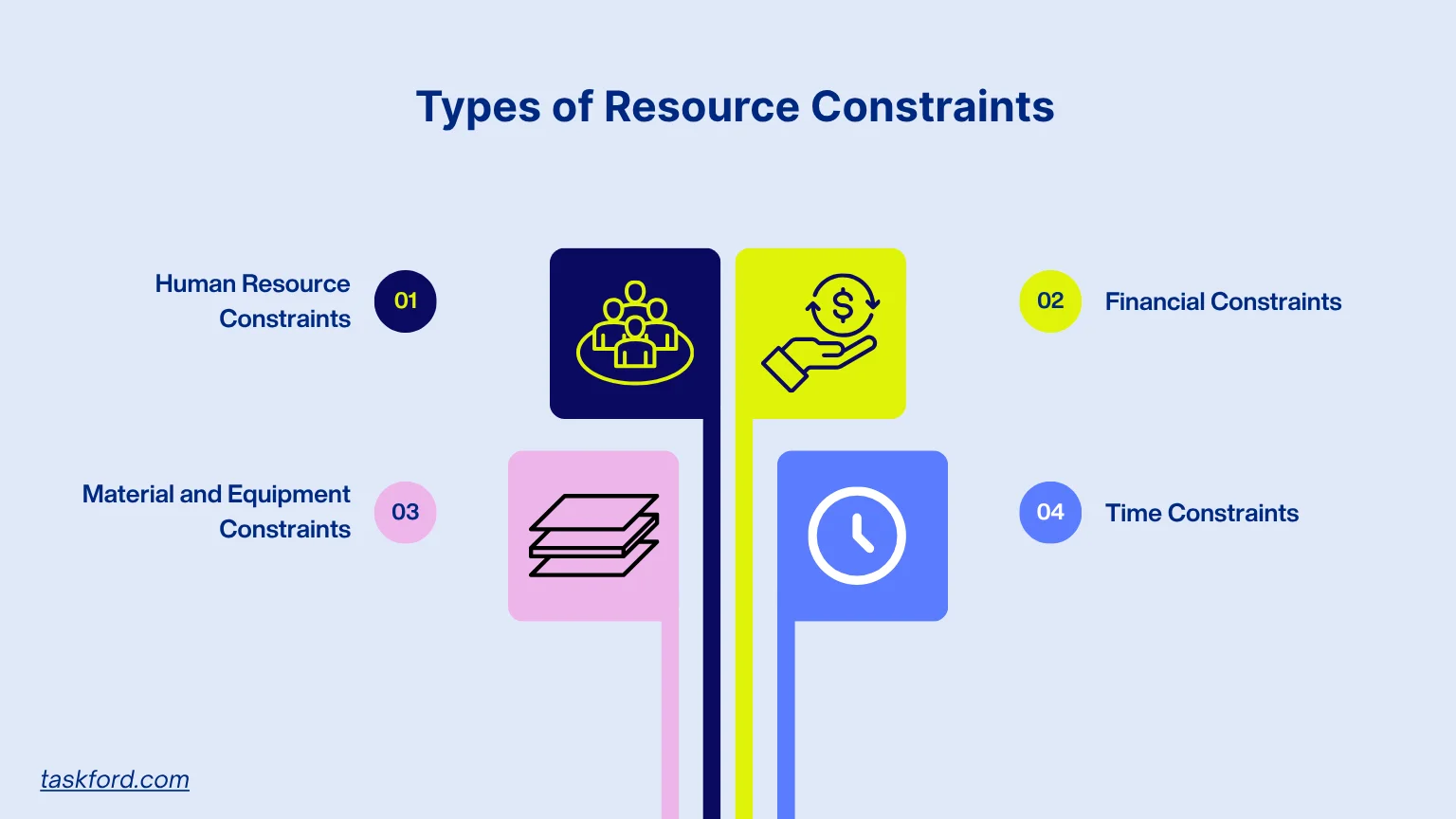
Resource constraints take several forms. Understanding the main categories helps identify where vulnerabilities exist and what kind of proactive measures to take.
1. Human Resource Constraints
These are the most frequent and often the most disruptive. They include:
- Shortages of skilled professionals
- Overloaded employees due to poor task distribution
- Unplanned absences or turnover
- Lack of cross-functional training
Without adequate staff or skill coverage, even simple tasks can become bottlenecks that slow the entire project. This is why noticing these constraints are as important as other types.
2. Financial Constraints
When funding is limited or poorly managed, project teams must cut corners or delay activities. Common signs include:
- Budgets that don’t align with project goals
- Insufficient cost buffers for unexpected needs
- Delays in resource procurement due to cash flow issues
Financial limitations can also lead to domino effects across other resources, leading to fewer materials, lower-quality tools, or reduced hiring capacity.
3. Material and Equipment Constraints
Physical assets are just as critical as people and budgets. Projects suffer when:
- Tools, machines, or technology are unavailable or outdated
- Supply chain delays prevent timely delivery of materials
- Shared assets are overbooked across projects
These constraints are particularly common in industries like construction, manufacturing, and IT services. Not managing these constraints properly could lead to loss of trust.
4. Time Constraints
Time is the resource that governs all others. Constraints occur when schedules are unrealistic, dependencies are overlooked, or tasks take longer than estimated. This often leads to rushed work, higher error rates, and reduced overall efficiency.
Each constraint type is interconnected. For example, limited time may cause rushed hiring (human constraint) or emergency purchases (financial constraint). Proactive planning helps you manage these relationships holistically.
Root Causes of Resource Constraints
To prevent resource constraints effectively, it’s crucial to understand what causes them in the first place.
Some common root causes include:
- Inaccurate forecasting: Project managers underestimate or overestimate the resources required, leading to wrong.
- Poor visibility: Resource data is scattered across tools or departments, making it hard to see real-time availability.
- Unclear priorities: Teams spend time on low-impact work while high-priority tasks suffer.
- Rigid planning: Inflexible schedules leave no room for unexpected events.
- Lack of collaboration: Teams don’t communicate capacity issues until they’ve already caused delays.
Most of these problems can be avoided through proactive resource management that prioritizes data, flexibility, and continuous review.
The Role of Proactive Planning
Proactive planning is the process of anticipating future resource needs and risks, then designing strategies to address them before they occur. Instead of reacting to shortages, you plan for them.
Proactive resource planning involves three core principles:
- Forecasting: Predict what resources will be needed and when.
- Balancing: Align resource supply with project priorities.
- Monitoring: Continuously review usage and performance to stay ahead of potential shortages.
This mindset shifts resource management from a reactive firefight to a preventive strategy that protects both productivity and morale.
How Proactive Planning Prevents Resource Constraints
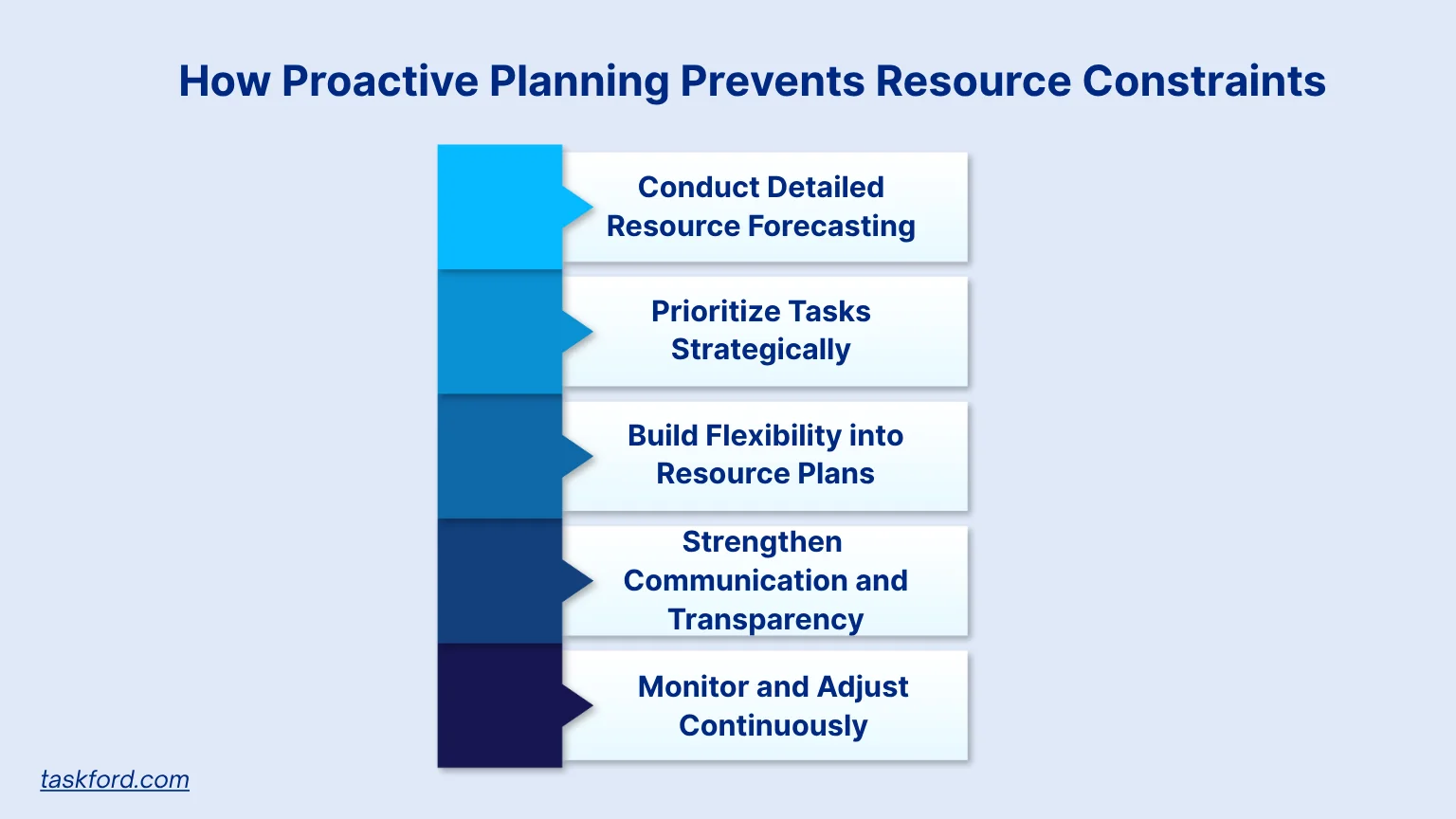
The key to preventing resource constraints lies in taking deliberate, forward-looking actions. Below are practical methods that project managers can implement.
1. Conduct Detailed Resource Forecasting
Accurate resource forecasting allows you to anticipate resource demand before work begins. Review project scopes, timelines, and deliverables to identify what skills, tools, and materials will be needed.
Useful steps include:
- Reviewing past project data to estimate future workloads
- Assessing staff capacity and expertise
- Accounting for external dependencies such as vendor schedules or seasonal demand
- Factoring in holidays, maintenance periods, and potential disruptions
Forecasting software or capacity planning tools can help visualize availability across projects. This visibility enables informed decisions about hiring, outsourcing, or rescheduling work before bottlenecks form.
2. Prioritize Tasks and Allocate Resources Strategically
Not every task contributes equally to project success. Proactive planning means focusing limited resources on what matters most.
Use methods such as:
- Priority scoring frameworks (like MoSCoW or RICE) to rank tasks by importance and impact
- Dependency mapping to identify which activities must happen first
- Scenario planning to see how reallocating resources might affect timelines
Strategic allocation ensures critical tasks always have what they need while minimizing idle capacity in less urgent areas.
3. Build Flexibility into Resource Plans
Plans that assume everything will go perfectly are destined to fail. Proactive project managers build flexibility into every layer of their plans.
Some effective approaches include:
- Creating buffer time between milestones
- Cross-training team members so they can cover each other’s roles
- Keeping a list of reliable backup vendors or contractors
- Setting aside contingency budgets for unplanned expenses
Flexibility doesn’t mean overplanning. It means being ready to adjust quickly when reality doesn’t match projections.
4. Strengthen Communication and Transparency
Many resource constraints worsen because teams don’t share information early enough. Transparent communication ensures that issues are visible before they cause delays.
Practical actions include:
- Holding weekly resource review meetings
- Using centralized dashboards where everyone can see workloads and progress
- Encouraging team members to report early signs of overload or idle time
When everyone understands the broader resource picture, collaboration improves and bottlenecks are resolved faster.
5. Monitor and Adjust Continuously
Proactive planning isn’t a one-time activity. Projects evolve, and so should your resource strategy.
Monitor resource utilization using key indicators such as:
- Utilization rate: Are team members working at sustainable levels?
- Overtime hours: Are workloads balanced?
- Budget variance: Is spending staying within plan?
- Task completion rate: Are deliverables on track?
Regular performance reviews allow managers to rebalance allocations, reforecast demand, and avoid repeating past mistakes.
Metrics to Measure Resource Constraint Prevention Success
To evaluate how well proactive planning is working, track specific metrics related to resource health and project outcomes.
Key performance indicators include:
- Resource Utilization: The percentage of available capacity that’s being productively used. Too high indicates overload; too low suggests inefficiency.
- Schedule Adherence: Measures whether projects are meeting planned milestones and delivery dates.
- Budget Adherence: Tracks how closely actual spending matches forecasts.
- Employee Satisfaction: High engagement often signals balanced workloads and sustainable pacing.
- Project Throughput: The number of completed projects or deliverables over a given time period.
Monitoring these indicators regularly helps confirm that proactive resource planning is genuinely reducing constraints, not just masking them.
Tools That Manage and Prevent Resource Constraints
Spreadsheets and manual trackers are prone to human error and can’t provide real-time insights. Modern resource management tools simplify proactive planning by centralizing data and automating key processes.
TaskFord, a comprehensive project management and resource planning platform, provides tools that give teams full visibility and control over their resources, making it simpler to plan ahead.
- Unified Resource Dashboard: Centralize all people, workloads, and schedules in one place for immediate clarity.
- Reports and Analytics: Monitor utilization, capacity, and performance metrics over time to refine future planning.

- Gantt and Timeline Views: Visualize dependencies and identify conflicts across ongoing projects.

- Real-time Task Management: Reassign or reschedule tasks instantly as team availability changes.
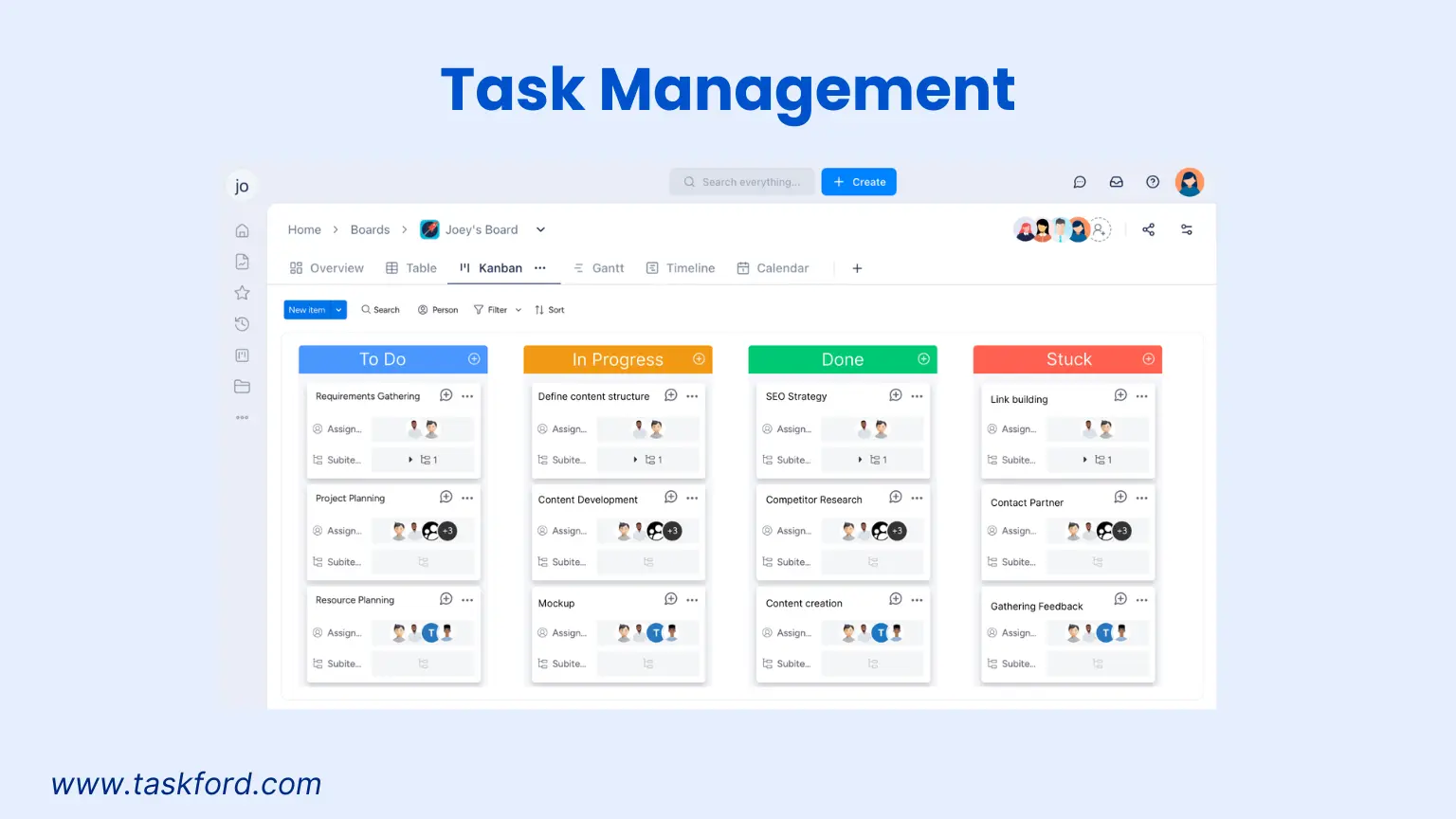
By integrating these features into daily operations, teams can make proactive planning a natural part of their resource management process rather than an occasional check-up.
Common Pitfalls That Undermine Proactive Planning
Even with good intentions, certain habits can weaken your proactive strategy. Avoiding these pitfalls keeps your planning realistic and sustainable.
- Planning for ideal conditions: Projects rarely run perfectly. Build in time and budget buffers for disruptions.
- Relying on tools without communication: Resource management software aids planning, but regular discussions keep everyone aligned.
- Ignoring skill mismatches: Assigning tasks to available people instead of qualified ones creates long-term issues.
- Failing to update plans: Plans should evolve alongside project changes, new hires, or client revisions.
- Neglecting historical data: Ignoring past performance leads to repeating the same capacity mistakes.
Proactive planning only works when it’s maintained with discipline and honest reflection.
Conclusion
Resource constraints are inevitable in project-based work, but their impact isn’t. By understanding the types of constraints, identifying their root causes, and embracing proactive planning, organizations can keep projects on track and teams performing at their best.
Proactive resource management ensures that potential bottlenecks are identified before they threaten progress. It promotes balance, visibility, and adaptability, three qualities that separate successful teams from those constantly racing against shortages. The more you anticipate, the fewer crises you face. And with the right planning tools in place, preventing resource constraints becomes not just possible but practical.
Learn more
- How To Use A Critical Path Calculator for Accurate Project Scheduling
- Unlocking Success In 2026 With The Right Resource Allocation Software
- Resource Management Explained: Key Definition, Must-Know Terms & Proven Techniques
Making work simpler,
smarter, and more connected
Join our waitlist and be notified first.

Related Blog
Subscribe for Expert Tips
Unlock expert insights and stay ahead with TaskFord. Sign up now to receive valuable tips, strategies, and updates directly in your inbox.


